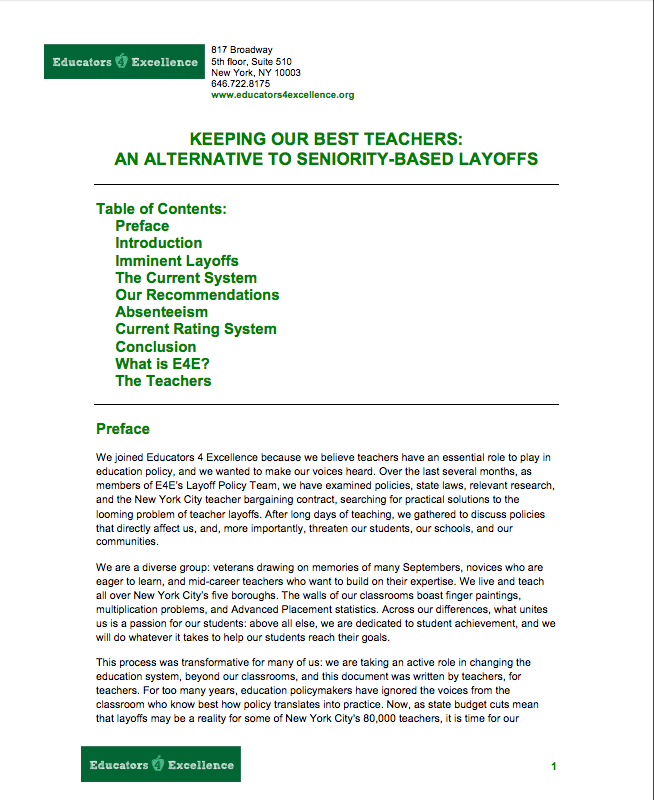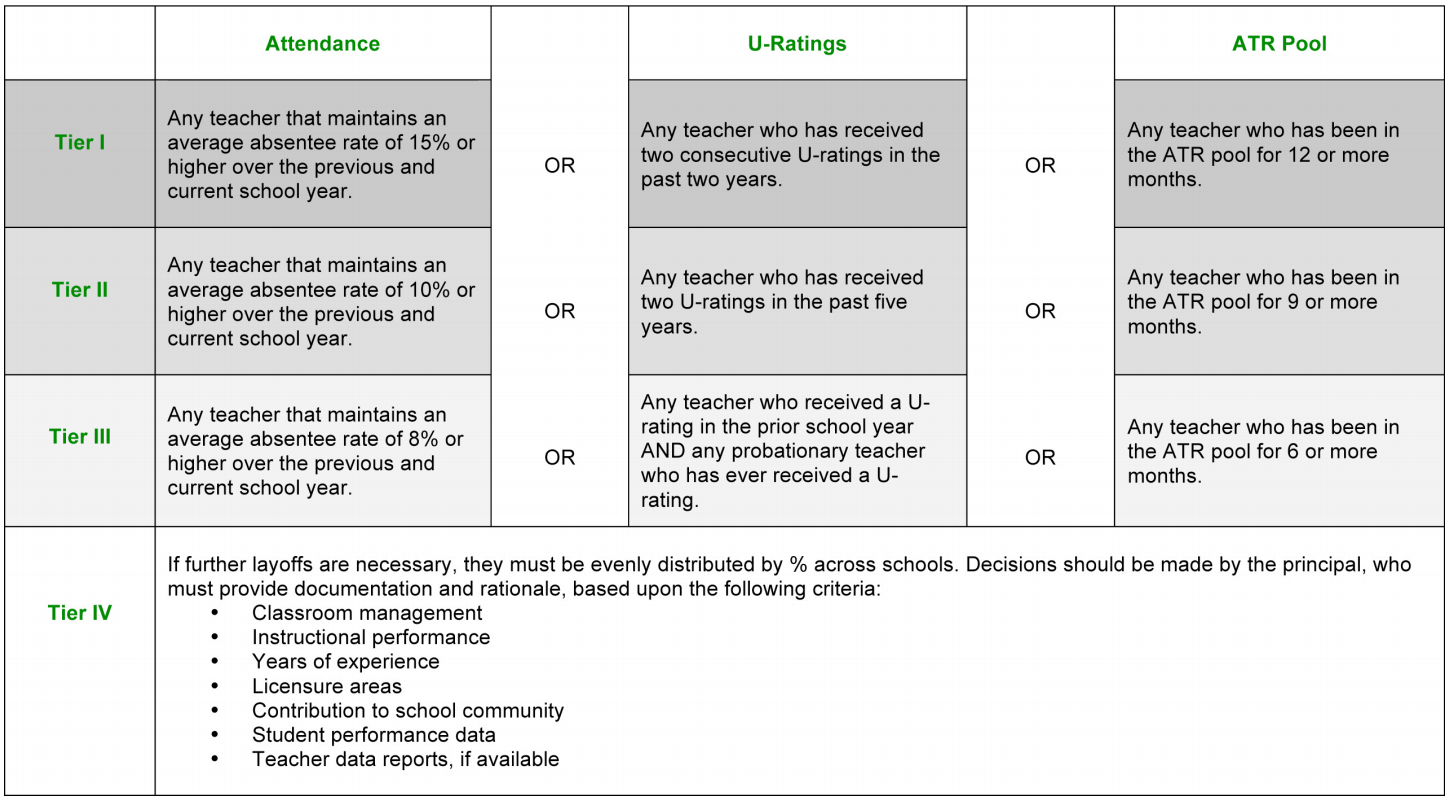Keeping Our Best Teachers
An Alternative to Seniority-Based Layoffs
February 2011

Sometimes, district and state budgets will necessitate layoffs in our public schools. We believe the “last in, first out” (LIFO) policy for layoffs wreaks havoc on our schools and our students. As teachers, the last thing we want is to see any of our colleagues laid off. But when our state is in financial crisis, New York needs a system that protects our students.
If teacher layoffs happened tomorrow, teachers would be laid off in order of reverse seniority – the most recently hired would be the first to go. The system, as of 2011, is quality-blind, ignoring the fact that teacher effectiveness is the single most important factor impacting student achievement. Given the dramatic variations in teacher quality, when making these tough decisions, we need to do so in a way that keeps the best teachers in the classroom. Furthermore, schools with large percentages of newly hired teachers, often in the lowest-income communities where students need the most support, would be the most severely impacted.
Recommendations:
-
Prioritize dismissal for teachers who are chronically absent, received unsatisfactory ratings from their principals or who have been in the Absent Teacher Reserve Pool for more than six months.
- If further layoffs are necessary, principals should make the decision, providing documentation and rationale, based on factors that impact teacher effectiveness, such as classroom management, instructional performance, years of experience, license areas, contribution to school community and student performance data.

About the Teacher Action Team
We are a team of 11 teachers who met together for four months to thoroughly review the teacher contract, New York State education laws, relevant research, recent legislative funding changes and alternative layoff policies across the country. After reviewing this material, developing questions, and collecting more data on the current system, the policy team began to analyze the strengths and weaknesses of many of the leading alternatives to LIFO. The policy team surveyed E4E’s broader membership for ideas and suggestions, which were incorporated into the final set of recommendations as outlined in this paper.
Christine Casher 9th- and 10-grade Literature Teacher in Manhattan
Esther Chu Middle School Science Teacher in Brooklyn
Michelle Costa High School Mathematics Teacher in Brooklyn
Margie Crousillat Kindergarten Teacher in the Bronx
Elizabeth Doctor 3rd-grade Teacher in Harlem
Jamie Ferrel 6th- and 7th-grade Special Education English Teacher in the Bronx
Laura Frazier High School Mathematics Teacher in the Bronx
Jarell Lee 3rd-grade Teacher in Brooklyn
Evan Piekara Middle School ELA and Social Studies Teacher in the Bronx
Jane Viau AP Statistics and Economics Teacher in Harlem
Val Lorie Wilson Middle School Special Education Teacher in the Bronx